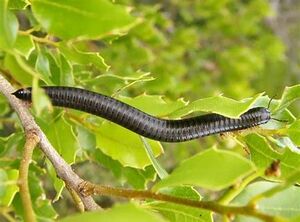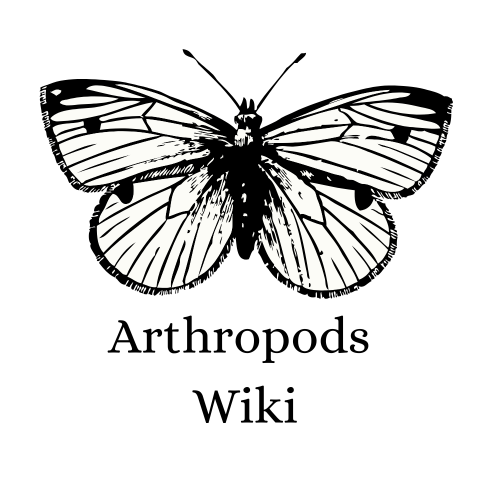
Ommatoiulus moreleti (spelled moreletii in older publications), commonly known as the Portuguese Millipede, is a herbivorous millipede native to the southern Iberian Peninsula where it shares its range with other Ommatoiulus species.[2] From here, it has spread by international commerce to a number of new localities. This species was accidentally introduced into Australia without its natural enemies and has since become an invasive pest. A number of methods have been developed to manage this millipede.
Distribution[]
O. moreleti is indigenous to the southern Iberian Peninsula. It has spread to a number of Atlantic islands, South Africa and Australia. This distribution appears to be related to 20th century shipping routes. Spread of O. moreleti by international trade may be facilitated by its ability to survive long sea voyages in a quiescent state. This species survives long, dry summers in a quiescent state in its natural habitat.[3][4] After its initial introduction to South Australia in about 1953 (perhaps originating from ships’ ballast) the species is continuing to spread through southern Australia.[5] It is possible that there has been more than one introduction to Australia. Since being introduced to Port Lincoln, South Australia in 1953, the millipede has spread to other parts of South Australia, Victoria, Tasmania, Australian Capital Territory, southern New South Wales and Western Australia around Perth.
Life cycle[]
Reproductive females mature their eggs during late summer-early autumn and may be seen mating during the autumnal activity period after which the female lays 60-80 eggs in a chamber 1–2 cm deep in the soil. The egg hatches to a pupoid stage, then develops by a series of moults up to 16 stages over 3 years. Males can be differentiated by the 8th and 12th stages but most are mature by the 10th or 11th stages. Females probably mature at similar stages. One-year-old immatures (stages 7–9) are light brown with a darker medial stripe. After 2 years the 10-11 stage millipedes have turned black. Adult Portuguese millipedes are smooth, 20–45 millimetres (0.8–1.8 in) long and coloured from grey to black. Millipedes older than 1 year moult only in spring and summer. Adult males are periodomorphic, alternating between a sexual and a non-sexual form. In their sexual form, they have gonopods (mating legs) in the seventh body segment, which they lose when they moult in spring. They remain in the non-sexual "eunuch" form until their late summer moult.
